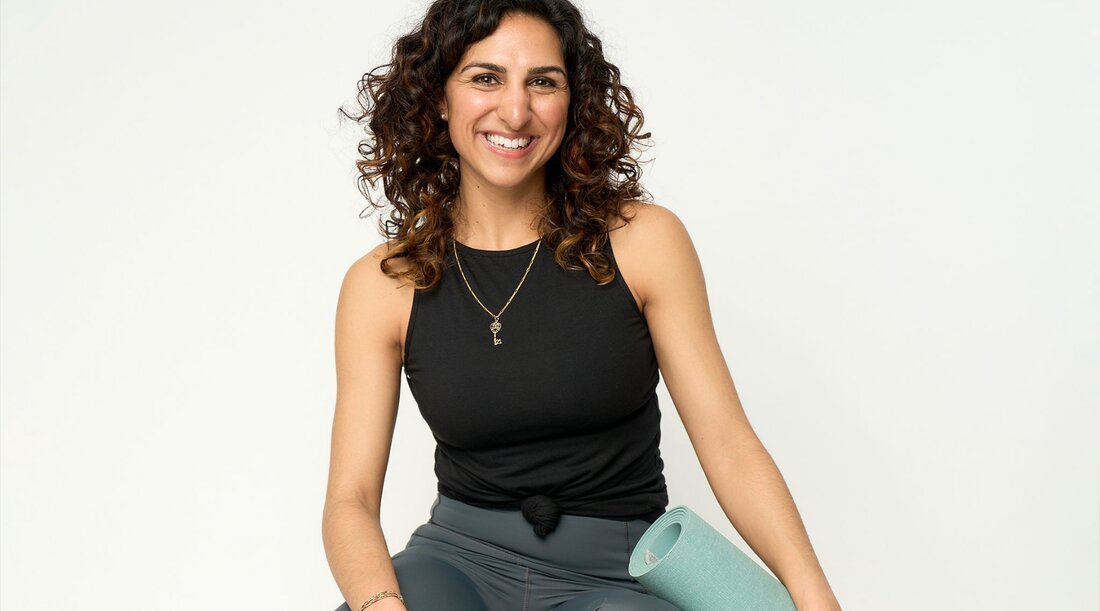5 yoga poses to support intestinal health with Dr.Rabia
5 yoga poses to support intestinal health with Dr.Rabia
Dr. Rabia, assistant doctor for gastroenterology in London and yoga teacher, shares her 5 favorite sposes to support intestinal health. Small rectangular neck rolls from yogamatt.
Legs high with upholstered support (Viparita Karani)

How to: start to lie on your back. Bend your knees and place your feet on the floor and knees towards the sky. Press through your feet to raise the pelvis from the mat. Place the small rectangular cushion horizontal under your hips. Find a comfortable place that feels right for you, but make sure that your entire pool is supported. Lift off your feet from there from there, stretch your legs and let your legs hover. Relax your feet and put your arms up to your sides with your palms so that you can open yourself through your chest. Stay in the pose for at least 3 minutes.
variations: lie down and place your calves on the seat of a chair or position the hips as close as possible on the wall and put your legs vertically against the wall.
child husbandry (Balasana)
with wide hips and her stomach on a cushion, this is the ultimate relaxing pose to earth and turn inside. Your front body is supported - so it has the opportunity to feel safe, protected and yet open. You can put your arms around the upholstery to strengthen the feeling of security, which is a positive signal for your intestinal brain connection. Turn your head half to stretch the opposite side of your neck. This pose is particularly useful if you suffer from cramps, flatulence or abdominal complaints.
How to: bring your knees as far as the mat and let your big toes touch every foot. Place the small rectangular upholstery vertically between your legs and fold it carefully so that your stomach and chest rest on the upholstery. Let your arms rest and put your cheek on the upholstery - turn your head and put the opposite cheek in this attitude after about 3 minutes.
variations: child husbandry without neck roll
Girlanden farming (Malasana)

like one: from a standing forward base with your hands either on the floor or the stones to support, move your feet as far as your mat and turn your toes outwards. Sink your hips gently in a crouch and go into the depth that feels comfortable for you. Put either the small rectangular cushion under your seat to rest, or put blocks under each heel if necessary. Place the palms in Añjali Mudrā (prayer hands) and use the back of the arms to gently wider the legs and to feel an opening of the hips.
Variant Loofing: Happy Baby (Ananda Balasana)
supported Sphinx (Salamba Bhujangasana)

to arch through the thoracic spine while her stomach rests on a cushion is a stronger feeling than the supported childhood. It stimulates a gentle stretch through its abdominal muscles and tightens the spine. In addition to slow deep breathing, this pose offers a subtle abdominal massage for your intestine, which can be particularly useful if you suffer from flatulence - but can be too much for abdominal pain, so listen to your body and adapt accordingly.
like one: place the small rectangular upholstery horizontally over the middle of your mat. Give yourself gently and aim to take off your pelvis and lower stomach on the upholstery. Support your upper body with your forearms and stay through the spine for a long time. Stay here as long as you feel comfortable.
variations: Kobra or dog -directed dog
abdominal massage

After the Sphinx, you can lie down and allow your stomach to rest with gravity. Slight compression on your stomach causes a calming feeling when you hold the pose with a light breath and get in the mood for the feeling of how your stomach extends and contracts. Turn your head half to stretch the opposite side of your neck. This pose is particularly useful after a long day when you want to switch to rest and digestive mode- the parasympathetic side of your nervous system.
How to: after some time in the supported Sphinx, let your upper body go on the mat and reject your arms by your side. Place a cheek on the mat and switch off during half of the pose. Stay here as long as you feel comfortable.
variations: without upholstery
prop: The small rectangular neck roll is filled with buckwheat, which adapts to the counter of your body and at the same time offers firm hold. If you want less support, simply remove some buckwheat with the zipper from the roll.
Combine with Dr. Rabia on her website: www.doctor-rabia.com or Instagram: @doktor_rabia
From the pen of yogamatt


Kommentare (0)